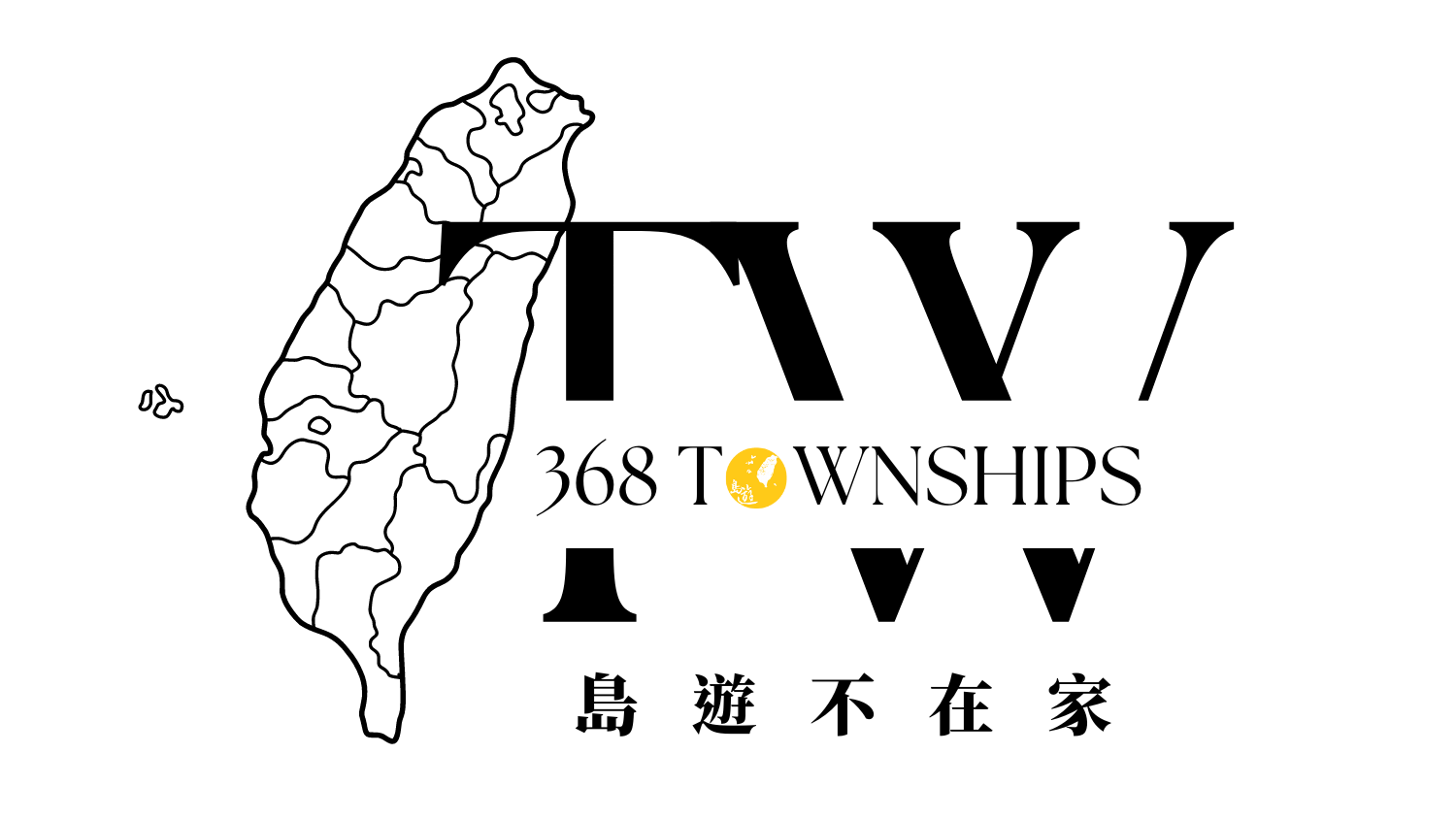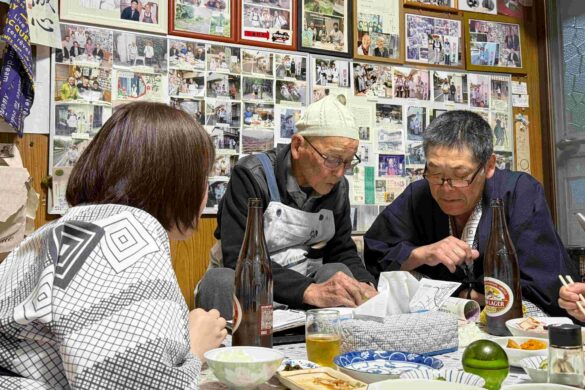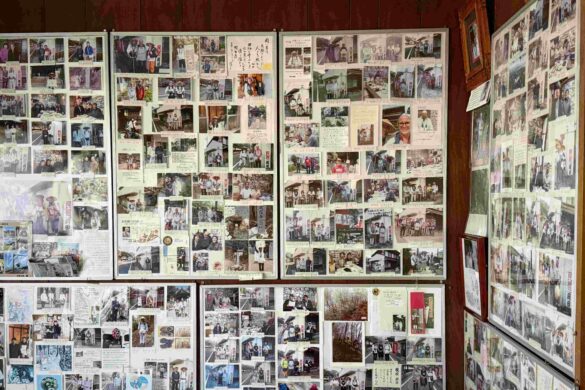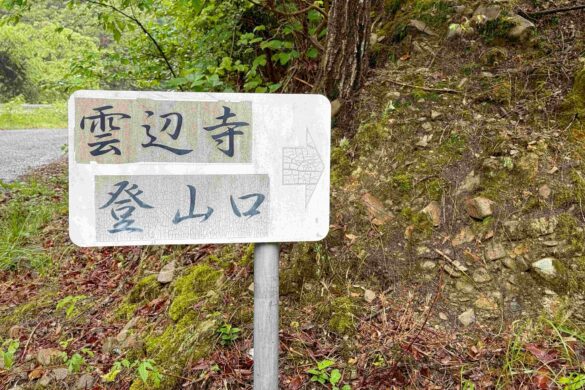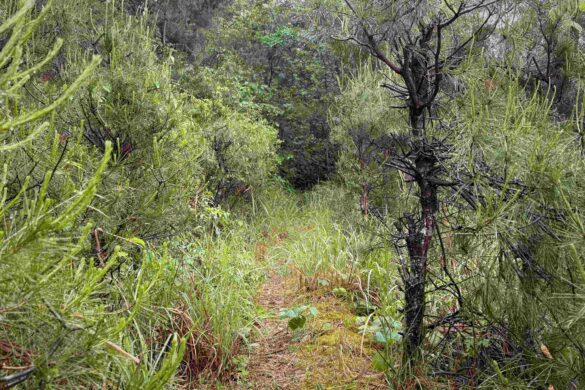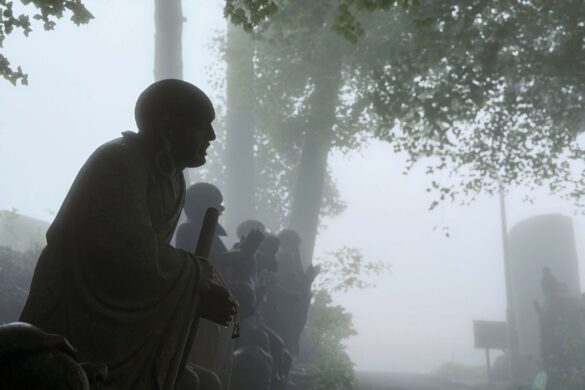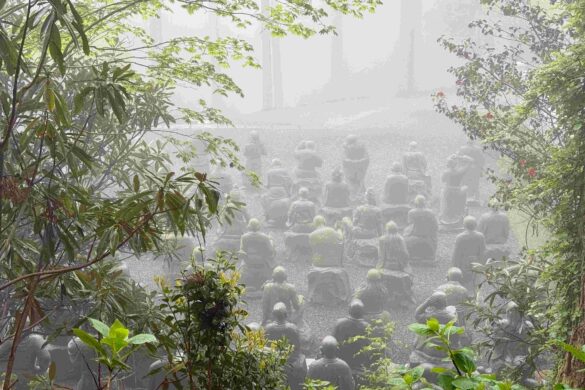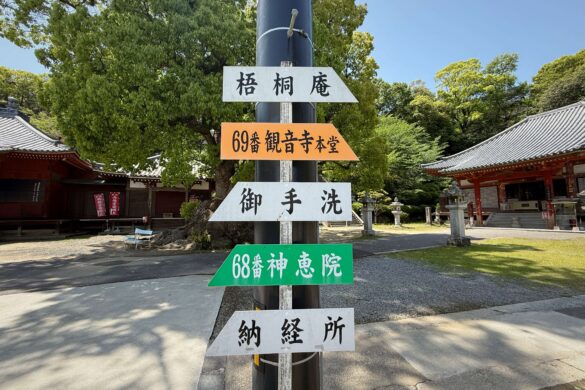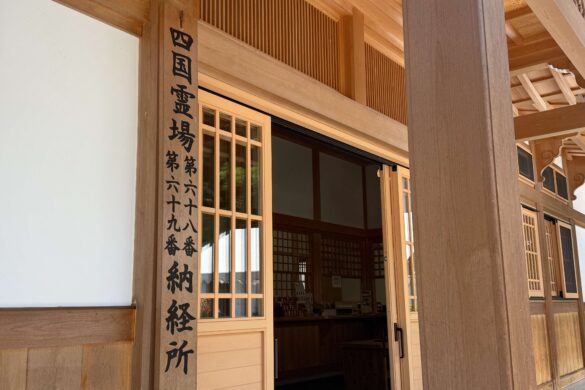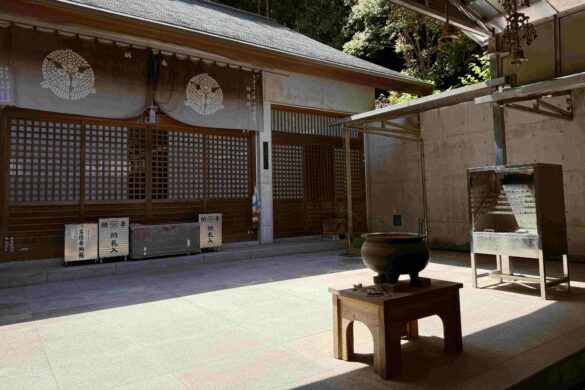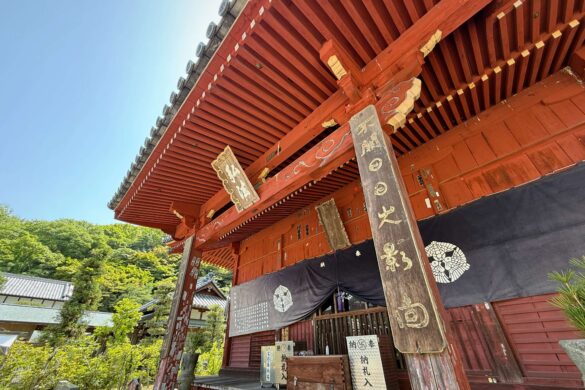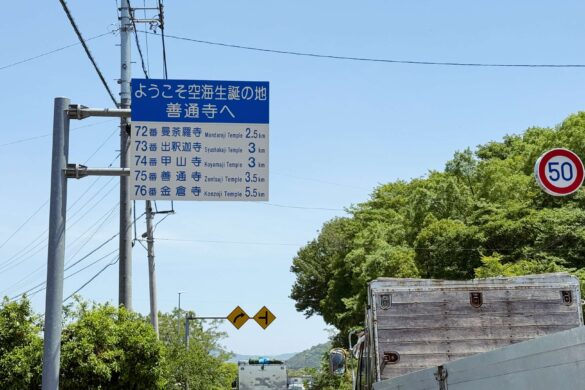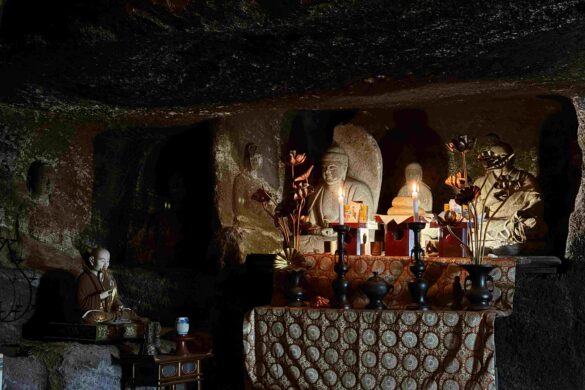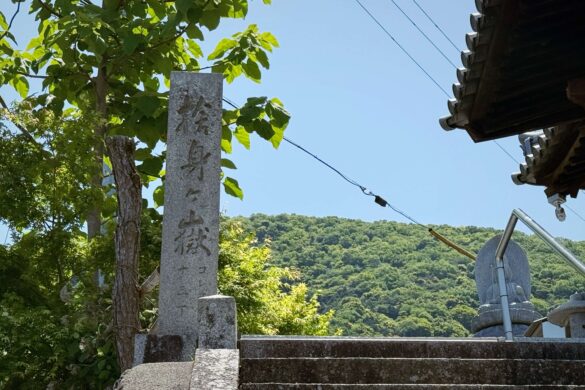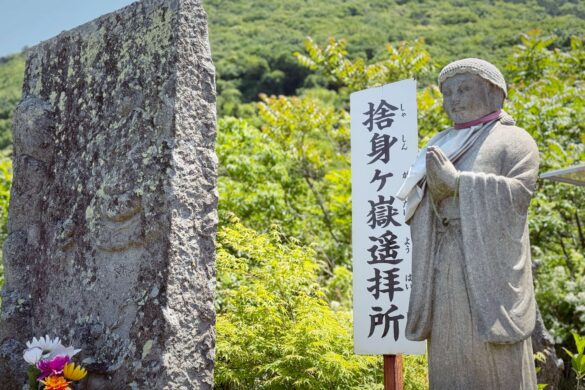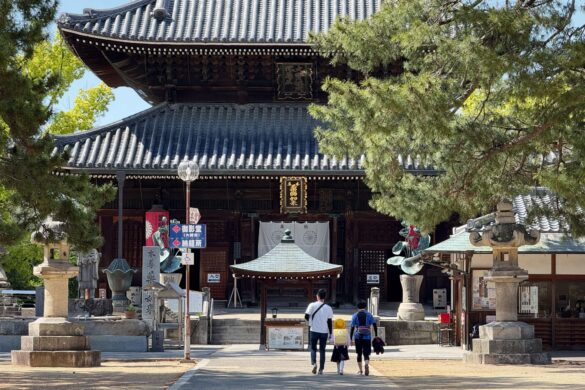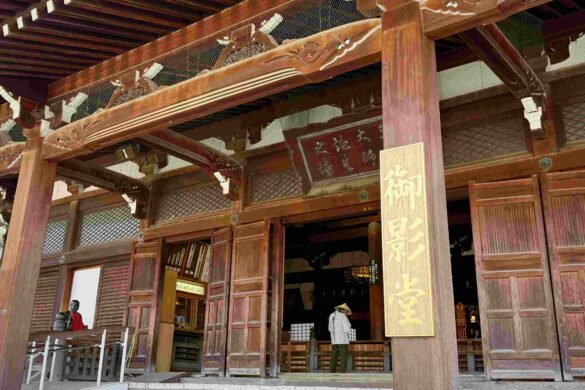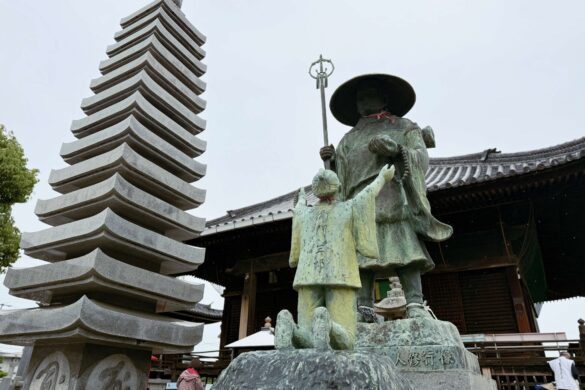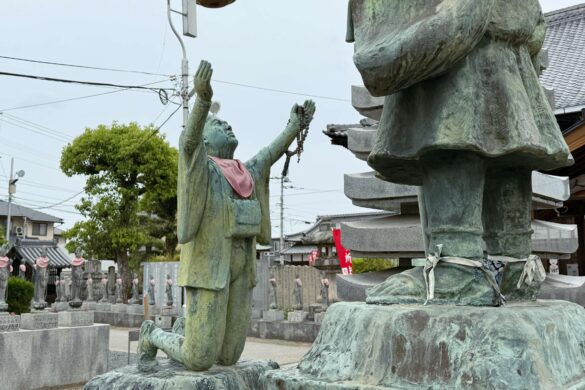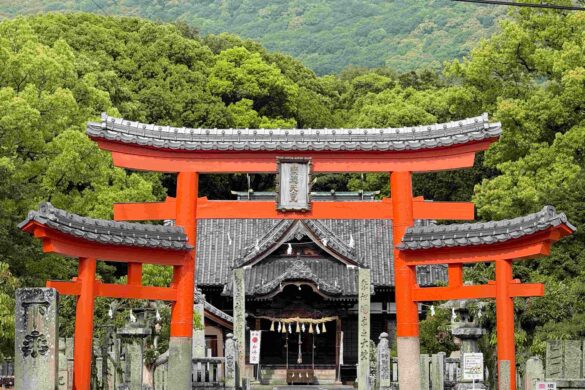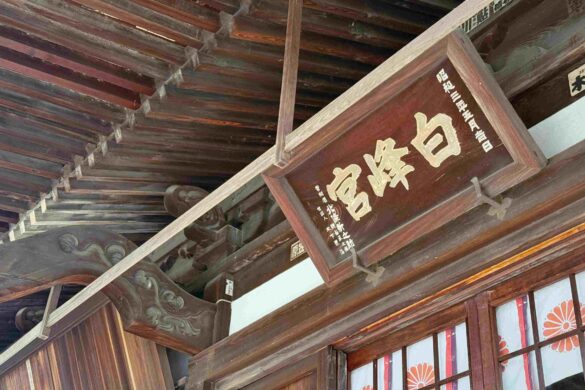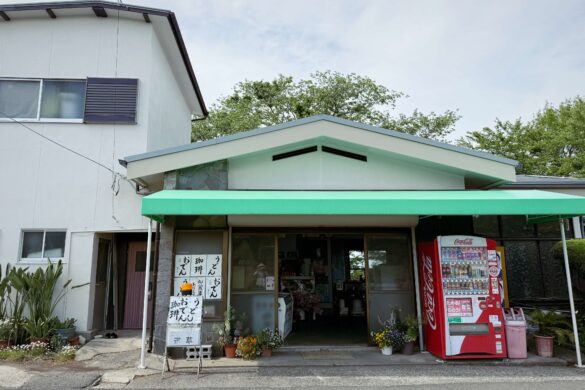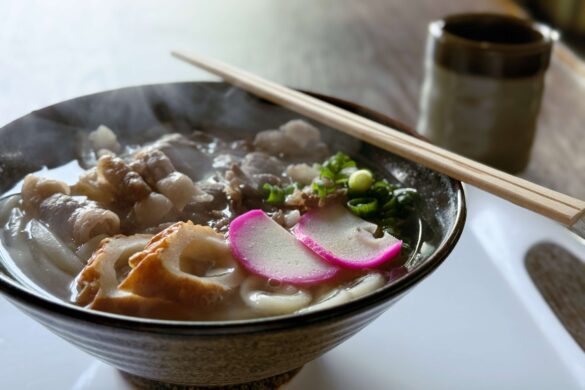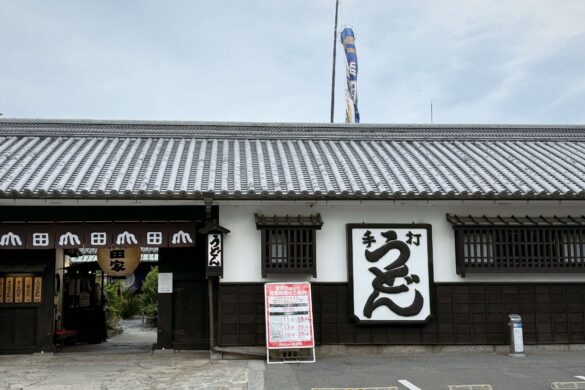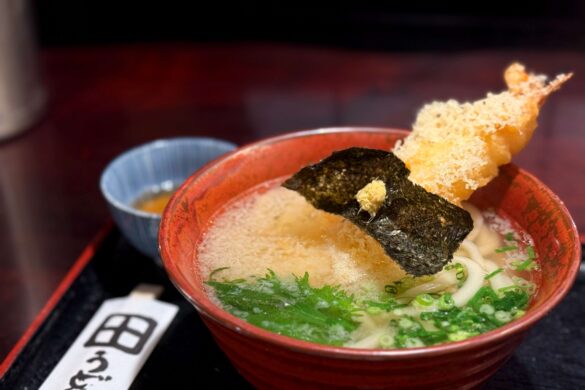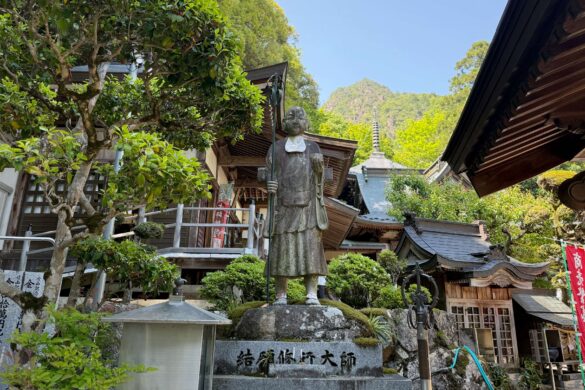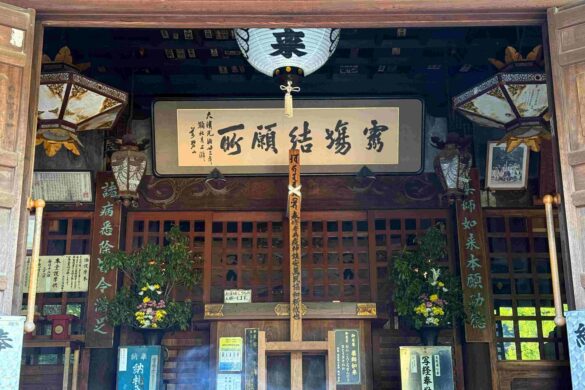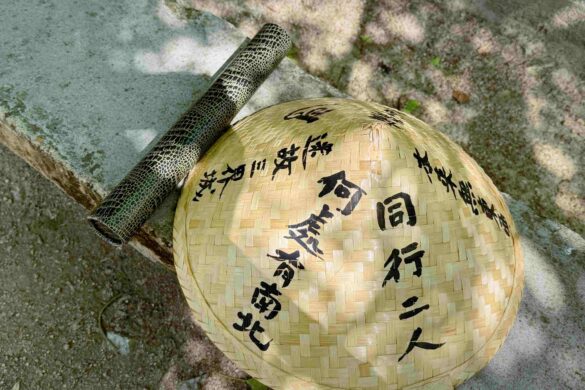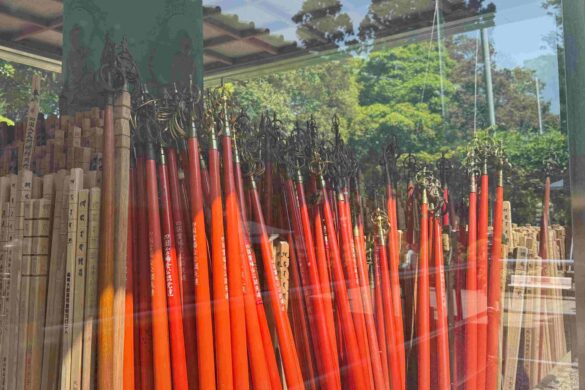From Temple No. 66, Unpen-ji, to Temple No. 88, Ōkubo-ji, there are 23 temples located within Kagawa Prefecture. As the final leg of the Shikoku Pilgrimage, Kagawa symbolizes the journey of a pilgrim who, after enduring hardships and overcoming inner struggles, finally reaches a state of spiritual freedom, fulfillment, and peace.
Still entangled in the secular world, I can't help but be brought back to reality by the searing pain of near-plantar fasciitis — far from reaching any kind of enlightened detachment. What I can say for certain, though, is that the people, places, and experiences of Shikoku have deepened my affection for Japan more than I thought possible; and that, if the day comes when I can no longer walk, I’ll miss this stubborn version of myself — the one who insisted on reaching the destination, no matter what.
Contents
。Day 36: A Day in the Life of a Pilgrim
Temples visited: 0
🚶🏾♀️: 14 km
Today’s destination is a guesthouse run by the legendary pilgrim “Grandpa Okada,” located at the foot of Unpen-ji — widely known as the toughest climb on the Shikoku Pilgrimage. After sleeping in a different place each night and staying in 17 guesthouses so far, I thought I’d share what life is like at these pilgrim lodgings. A pilgrim’s daily rhythm is closely tied to where they stay.
With the 88 temples scattered across countryside, mountains, coastal points, and towns, choosing accommodation is like real estate investing: Location, location, location! In rural areas, you won’t find chain hotels — just finding a guesthouse near the last temple you plan to visit today, or the first one for tomorrow, is already a stroke of luck. The next priority is whether the guesthouse offers “one night, two meals.” On the pilgrimage route, shops and restaurants are rare, so living off cookies, bread, and energy bars every day would be disheartening. I almost always opt for the meal plan, which also means I need to return to the guesthouse on time — because there's still plenty to do in the evening. After walking 7 to 9 hours, that’s enough exertion for one day.
Guesthouses along the pilgrimage tend to follow a simple, structured routine set by the hosts. Check-in usually starts after 3 p.m., and pilgrims trickle in between 3 and 4. Most places have just one shared bath, so you wait in your room for your turn. After bathing, you wait again for dinner, usually served by 6:30 at the latest. After eating, guests often chat in the dining room before saying good night and heading to bed. Stretching and elevating my legs is a must-do ritual — I try to finish by 10 p.m., then I’m out like a light. The next day usually starts around 5 a.m., followed by breakfast at 6, then it’s time to hit the road again.
Three things about these guesthouses have genuinely surprised me:
- No passport check required. Just fill out your name and basic details. The level of trust in foreign guests is incredible.
- You pay after breakfast the next morning, which also gives you a chance to thank the hosts.
- Some places literally don’t lock the doors. The first time I encountered this, I asked the hostess where the room key was. She cheerfully replied, “There are no keys — it’s totally safe here!”
A couple of times, I was placed next to male pilgrims in traditional Japanese rooms, where sliding open the door would reveal your neighbor directly…Of course, everyone was respectful and never opened the doors — but you could still hear every movement and sound from next door. What can I say? The people of Shikoku are warm-hearted, and the pilgrims kind and considerate. These aren’t experiences you’d ever have in a hotel, ryokan, or Airbnb. And they’ll surely be the things I miss most when I look back on my time walking the Shikoku Pilgrimage.
。Day 37: Climbing in the Rain to the Highest and Hardest Temple
Temples visited: Unpen-ji (No. 66)
🚶🏾♀️: 16.8 km
🚠:Descend the mountain
A few days ago, I saw the weather forecast and knew rain was coming — still, I couldn’t help but feel a little uneasy. But when the moment finally came to step out and the rain came pouring down, I felt oddly calm. It was happening — and I had to move forward anyway. You won’t get anywhere just standing still. The pilgrimage path from Guesthouse Okada to Unpen-ji was surprisingly manageable. Despite the rain, the trail wasn’t slippery — not many fallen leaves or loose stones. It’s steep, yes, but not treacherous. Even someone with shaky legs like me could reach the summit in three and a half hours.
At 911 meters above sea level — the highest elevation of the Shikoku Pilgrimage — Unpen-ji lives up to its name: the “Temple at the Edge of the Clouds.” Visibility was down to just five meters — everything beyond was swallowed by mist. It really felt like standing on the edge of the clouds. This surreal beauty, however, is a rainy-day exclusive. On clear days, the view stretches far and wide, with the Seto Inland Sea visible in the distance. In autumn, it’s even a popular spot for fall foliage.
。Day 38: Teleporting to the Next Temple Instantly!
Temples visited: Daikō-ji (No. 67) to Motoyama-ji (No. 70)
🚶🏾♀️: 18.5 km
After visiting so many sacred sites, this was the first time I experienced the only "two-in-one" temple on the Shikoku Pilgrimage: Jinnein and Kanonji. It truly felt like teleportation — going from one temple to the next in an instant. Even the temple stamps (nōkyō) were done by the same head priest. Lightning-fast!
Originally, Jinnein and Kanonji were a single temple. But during the Meiji era, when Japan enforced the policy of separating Shinto and Buddhism (shinbutsu bunri), all Buddhist statues from the nearby Hachiman Shrine were moved into the western Golden Hall — what is now Jinnein.
。Day 39: What Was I Doing When I Was Seven?
Temples visited: Iyadaniji (No. 71) to Kōyamaji (No. 74)
🚶🏾♀️: 22.8 km
Today I walked through an area called Zentsūji City. Why would a town be named after a temple? It turns out Zentsū-ji is the birthplace of Kūkai, the founder of Shingon Buddhism. The surrounding mountains and temples were where he spent his early childhood — playing, learning, and eventually, practicing asceticism. Starting from Temple 71, Iyadaniji, the entire atmosphere began to shift. Kūkai’s presence became almost tangible. At Iyadaniji’s “Lion’s Rock Cave,” he is said to have studied from age 9 to 12 — today, you’ll find statues of him alongside his parents inside.
At Temple 73, Shusshaka-ji, there’s a sacred viewpoint called Shashinga-take Yōhaijo, where one of the most powerful legends of his youth is remembered. At just seven years old, Kūkai climbed to the summit of Mount Gahaishi and made a vow to dedicate his life to Buddhism and the salvation of all beings. He prayed: if his wish was accepted, may Shakyamuni Buddha show a miracle; if not, he would offer his own body to the Buddhas — and then he leapt off a cliff. To me, the fact that he survived is one miracle, but the fact that he made such a vow at the age of seven — that, too, is a miracle in itself. Perhaps the life of a spiritual master is really a chain of miracles from the start.
。Day 40: The Birthplace of Kūkai
Temples visited: Zentsū-ji (No. 75) to Gōshō-ji (No. 78)
🚶🏾♀️: 19.5 km
As Kūkai’s birthplace, Zentsū-ji stands alongside Kyoto’s Tō-ji and Wakayama’s Kōyasan as the three great sacred sites dedicated to the founder of Shingon Buddhism. Just looking at the map reveals how vast the temple grounds are; once inside, you immediately sense an undeniable grandeur that sets this place apart from other pilgrimage sites. The temple staff, always impeccably dressed and radiating warm, graceful smiles, create a welcoming and comfortable atmosphere.
In the afternoon, as I arrived at Temple 78, Gōshō-ji, a light rain began to fall. The scene of Kūkai’s legendary encounter with Emon Saburō felt especially vivid and dramatic under the gentle drizzle. Emon Saburō, who had brought misfortune upon himself through past misdeeds, undertook a harsh pilgrimage across Shikoku to seek Kūkai’s forgiveness — becoming known as the original model pilgrim.
。Day 41: The Last Ten Temples!
Temples visited: Tennō-ji (No. 79) to Kokubun-ji (No. 80)
🚶🏾♀️: 21.9 km
Blessed by Emperor Sutoku, Tennō-ji stands out not only for its grand name but also for its striking vermilion torii gate. During the 12th-century Hōgen Rebellion, Emperor Sutoku was exiled to Sanuki. After his death, Emperor Saga established this temple to honor him, hence the name Tennō-ji (Emperor’s Temple).
In the afternoon, while walking around Sanuki Kokubun-ji, I suddenly spotted a familiar face — Mr. “Give Me Five”! Using a translation app, he said something like, “It hasn’t been easy getting this far. The end is almost in sight!” Indeed, today marks the start of the final ten temples countdown. Just three more mountains to climb, and the pilgrimage will be complete. We exchanged high fives and wished each other smooth completion of our journey.
。Day 42: Why Am I So Reluctant to Accept Cash Offerings?
Temples visited: Shiramine-ji (No. 81) to Negoro-ji (No. 82)
🚶🏾♀️: 32 km
Today, once again, I walked to the brink of plantar fasciitis. Every step I took after a break sent a sharp pain through my foot. Shiramine-ji and Negoro-ji sit at altitudes of 280m and 365m respectively—not too high, and the pilgrimage paths weren’t particularly tough: one involved an endless climb of stone steps, the other, a slightly slippery downhill trail. My mind felt light, but the accumulated exhaustion continued to speak clearly through my body.
Over more than five hours on the mountain trails, I came across only one open shop: Michikusa, a tiny noodle and general store run by an elderly woman. Known affectionately as the “Oasis of the Pilgrimage,” it offered the priceless comfort of a steaming bowl of udon when I was famished. Nothing could have made me happier in that moment.
On my way back to the inn, a woman I had nodded hello to earlier suddenly called out from behind. She pulled out a 1,000 yen bill from her pocket and handed it to me.
It was the first time I’d ever received an osettai in cash. Shocked, I instinctively waved my hands and said, “Too much!” But in a flurry of gestures and mutual incomprehension, I gratefully accepted it. Aside from dealing with physical pain, what occupies most of my mental space during this pilgrimage is rethinking how I perceive value. That same 1,000 yen, if received as food or goods, somehow feels easier to accept. But why does cash make me hesitate so much? After all, it’s one of the most straightforward expressions of kindness.
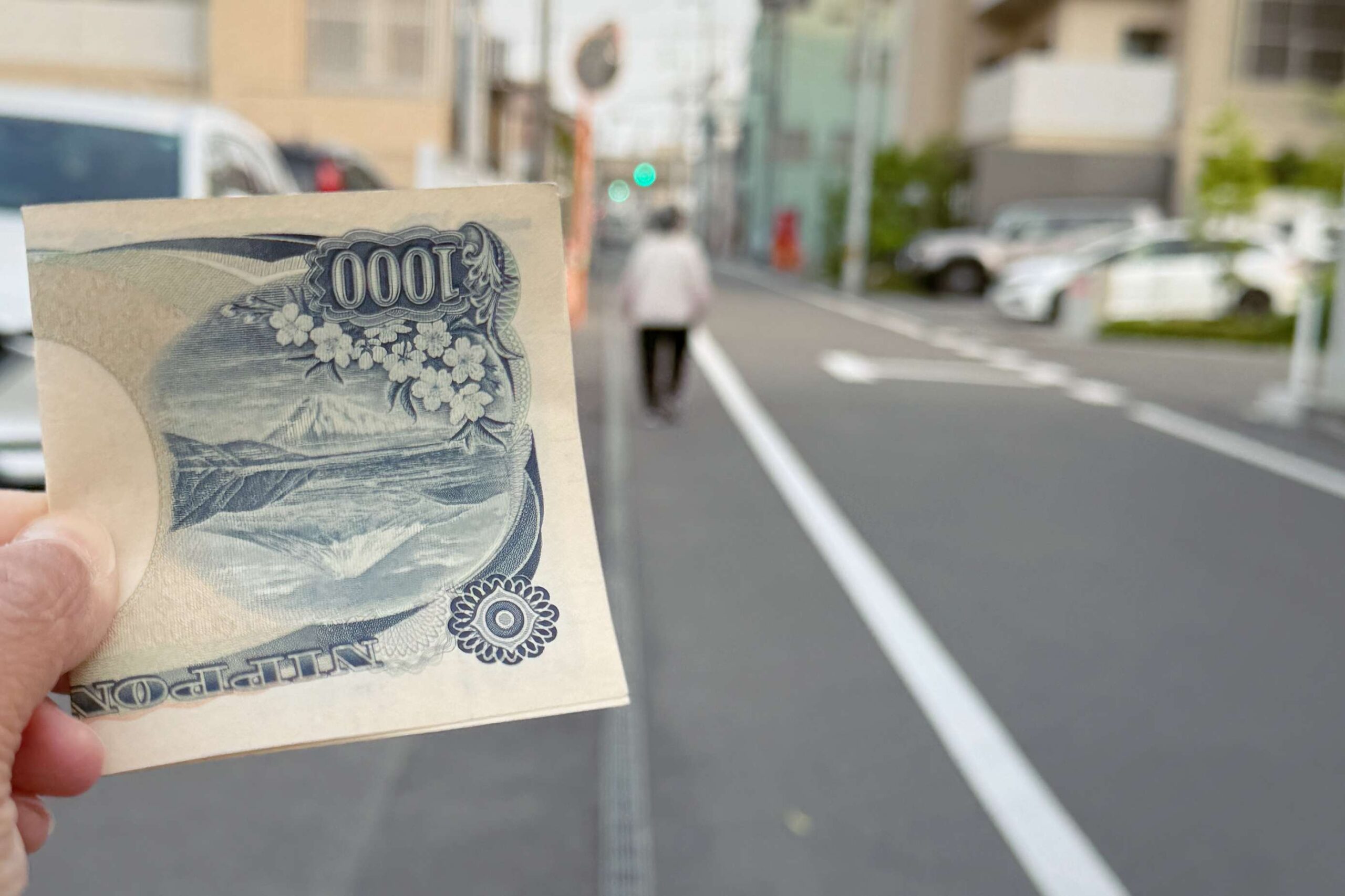
。Day 43: Instant Karma
Temples visited: Ichinomiya-ji (No. 83) to Yakuri-ji (No. 85)
🚶🏾♀️: 31 km
🚠: Descend the mountain
Before soaking in the public bath, I stepped on the scale—2 kilograms heavier than when I started the pilgrimage. So there you have it: living proof that “eat more, move more” doesn’t equal weight loss. It’s “eat less, move more” that actually works! Meanwhile, the genetically blessed Japanese people remain slim and graceful even with a diet of ramen and gyoza. I try one “double-carb” meal and boom—instant karma. Still, I have no regrets. After descending from Yakuō-ji, I deliberately walked an extra 2 kilometers to get to Honjin Yamada-ya, a renowned udon shop. Its building is registered as a tangible cultural property, and their noodle-making strictly follows traditional steps: kneading by foot, hand-rolling the dough—every bite of those fragrant, chewy noodles was absolutely worth it! So I’ll keep praying seriously, eating wholeheartedly, and fueling up for the final stretch ahead.
。Day 44: Pilgrimage Complete!
Temples visited: Shido-ji (No. 86) to Ōkubo-ji (No. 88)
🚶🏾♀️: 22.6 km
🚌: 22 km
44 days, 88 temples, 1,200 kilometers — today, the journey is finally complete. As the final temple stamp from Ōkubo-ji was pressed into my pilgrimage book, I was surprised by the calmness I felt. But immediately after came a deep sense of reluctance to say goodbye. There are so many things I have to part with today.
Ken-san, who walked with me on the first day, whom I bumped into time and again along the route, and who, by fate, also completed his pilgrimage on the same day — is now heading back to Tokyo on an overnight bus. My woven sedge hat, which shielded me from wind and rain for 44 days, will stay behind at Ōkubo-ji. The days of solitary walking, during which my mind grew clearer with each step, are coming to a close. One day, when I'm no longer able to walk like this, I know I’ll look back with longing at this deeply nourishing and beautiful time in my life.
。Day 45: Full Circle, Kōyasan Awaits
Temples visited: Ryōzen-ji (No. 1)
🚇: 84 km
After completing their pilgrimage, many henro (pilgrims) return to where it all began — the first sacred site, Ryōzen-ji — forming a perfect spiritual circle. Others journey to Mount Kōya, where Kūkai (Kōbō Daishi) entered eternal meditation, to report the completion of their pilgrimage. Returning to Temple No. 1, I took my time expressing gratitude to every person who had cared for or helped me along the way. The more I thought about it, the more emotional I became — the people and places of Shikoku have deepened my affection for Japan in so many unexpected ways. As tradition goes, donning the white pilgrim robes, the sedge hat, and the wagesa, one is treated with a special kind of respect by the people of Shikoku, who have long held Kūkai in deep reverence.
But being a pilgrim is like being an athlete, a mountaineer, or anyone earnestly pursuing a goal — people can sense that you’re walking toward something meaningful, and they want to help you get a little closer to it. Every day, I felt that kindness — in a friendly greeting, a bottle of tea, someone showing me the way, or even tangible support like money or services. All of it strengthened my resolve to keep moving forward. Even when I was completely exhausted, I never once thought about quitting — that’s the magic of the Shikoku pilgrimage.
Kōbō Daishi, see you next time at Mount Kōya.
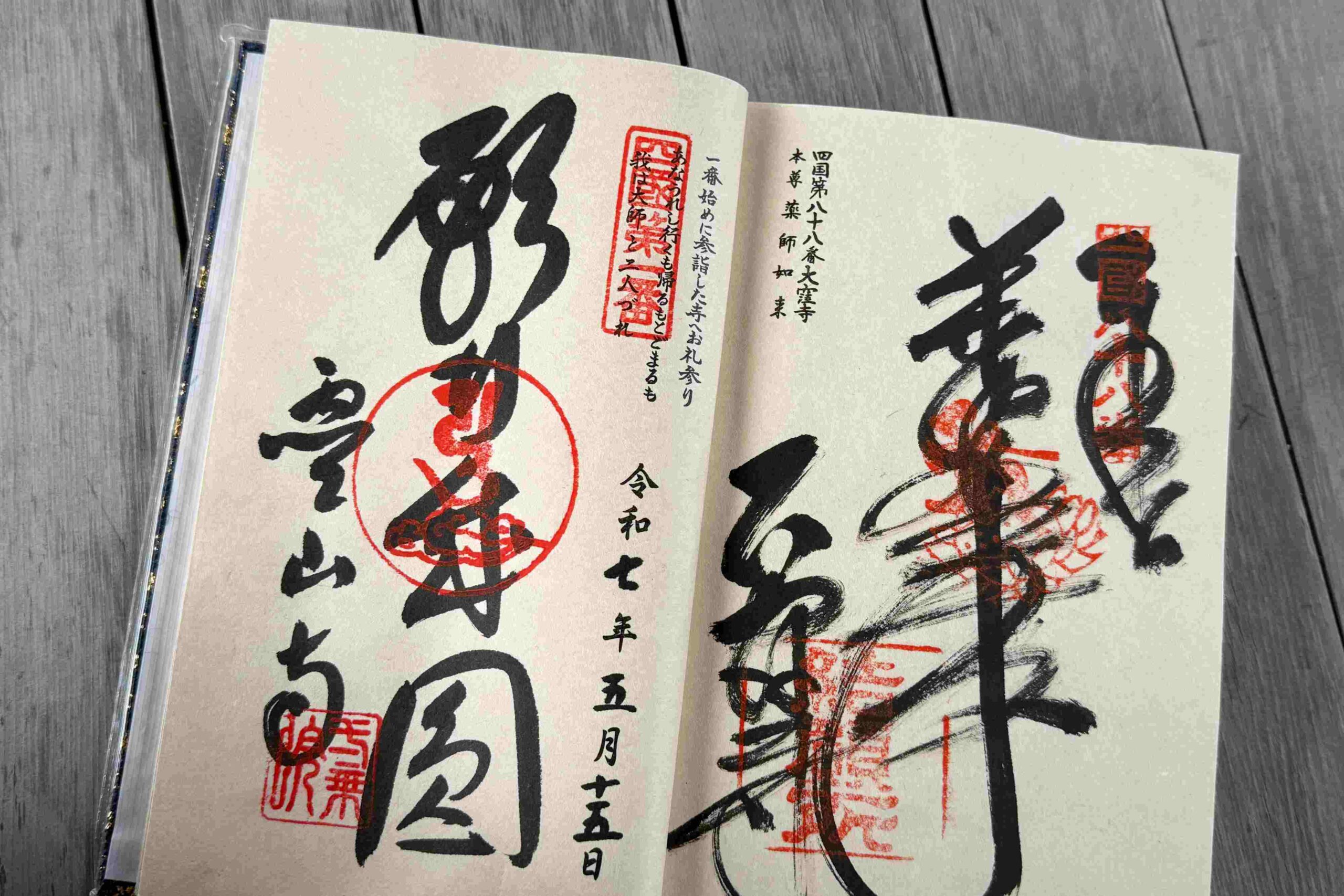
This journey along the Shikoku Pilgrimage gave me the rare chance to spend long stretches of time alone with myself—bringing both reflection and inspiration. I sincerely hope more people can personally experience the depth and meaning of this sacred trail. If you're curious or planning to walk it yourself, I hope this article offers even a small bit of help. If you’re interested in the scenery along the route or what the temples look like, feel free to visit my YouTube channel. In the Shorts section, I’ve documented every temple—precious memories I’ll keep revisiting again and again.
